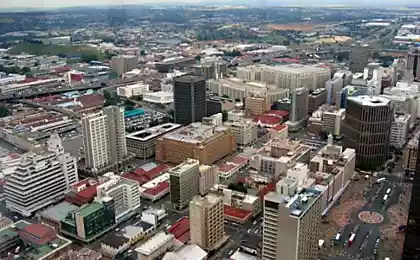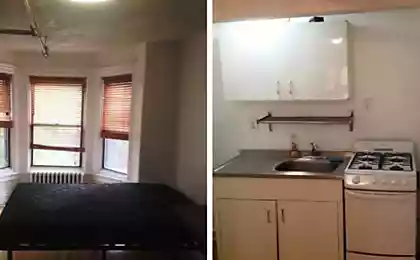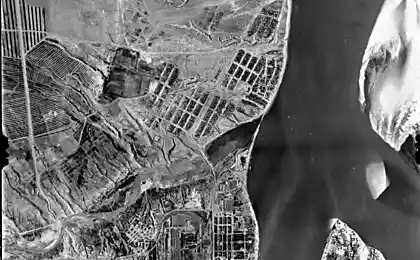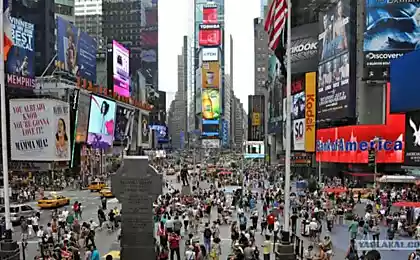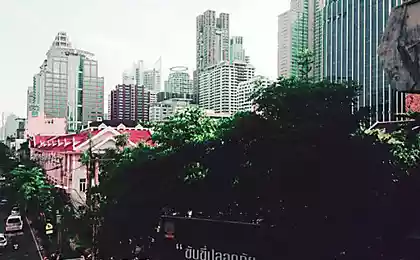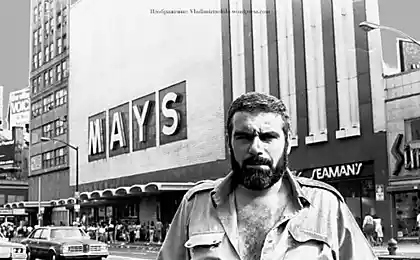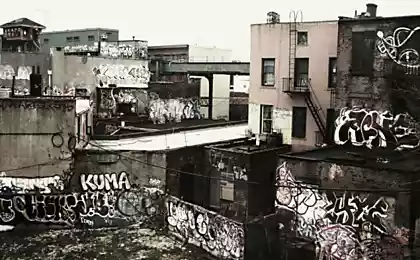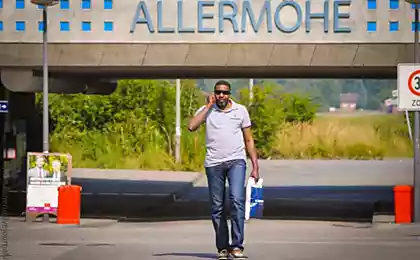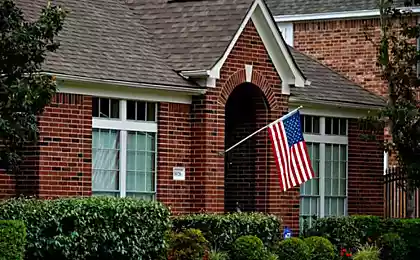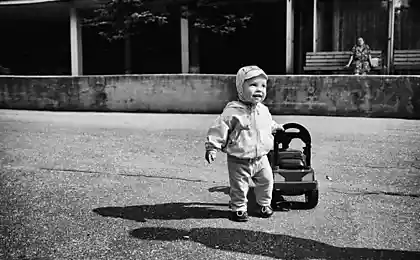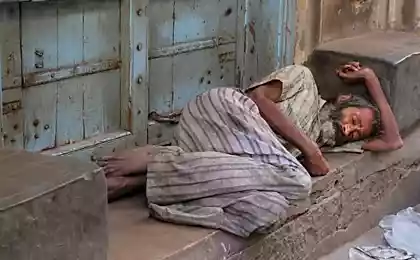1613
Johannesburg
The financial capital of Africa, the largest city of its most economically developed countries and at the same time a hotbed of crime, white residents who live today in reserves resembles a fortress. Johannesburg, or, as it is known locally, Joburg, african New York, in 1950-1970-years experienced in the production of diamonds and gold for the continent an unprecedented flowering of that in the 1990s with the abolition of the apartheid regime plunge into the abyss of criminal chaos. Onliner.by investigated the turbulent history and now foggy "City of Gold" and found out whether he will repeat the sad fate of Detroit's.
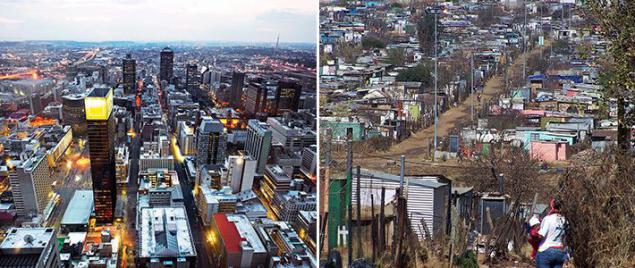
In February 1886 the Australian John Harrison, quarried stone for the construction of a building on t. N. "Farm Langlahte" in South Africa's Witwatersrand mountains, accidentally discovered the breed, which he recognized as the gold-bearing. Thus was formed open about 2, 7 billion years ago, a rich "Golden Arm", a chain of deposits to date has brought to humanity more than 48 000 tons of the precious metal, about 40% of the gold mined in human beings. News of the sensational discovery spread quickly through the neighborhood, and in the next year on the site of the opening of Harrison in hastily-built town of about 3,000 people lived. Future in Johannesburg in the early days of its existence.
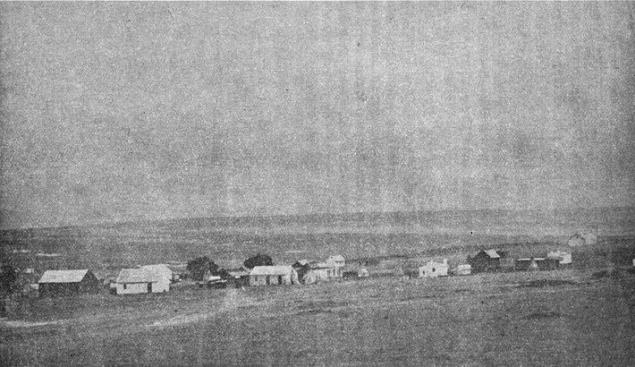
Settlement due immediately raging around the "Gold Rush", has experienced explosive growth in the population. By the end of XIX century lived here for more than 100,000 fortune seekers from around the world, Johannesburg quickly built up capital buildings, and has only a quarter of a century after the founding of the tent camp in the desert prospectors little reminiscent.
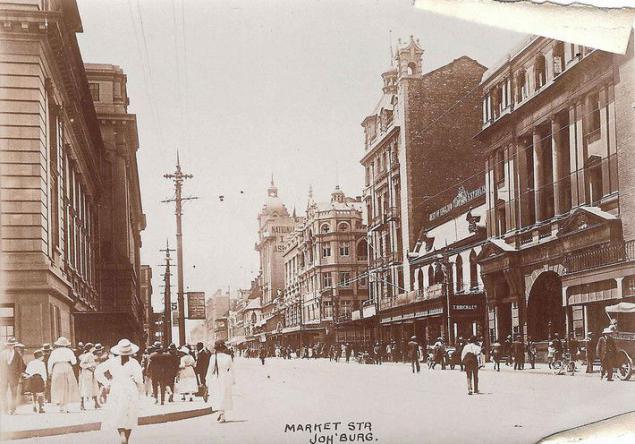
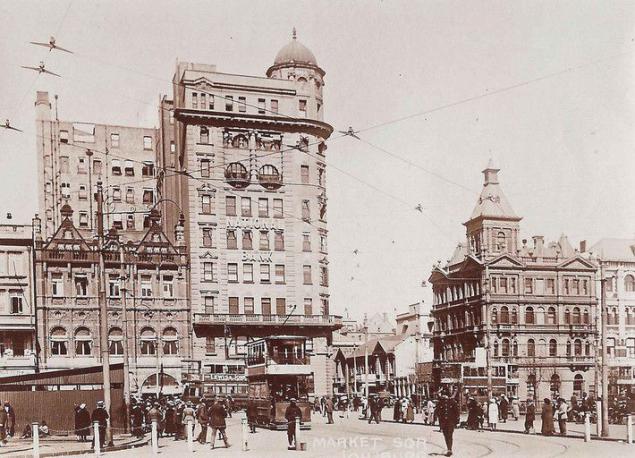
In 1936, when the "city of gold" (a nickname quickly got Joburg) is 50 years old, he already had 620,000 inhabitants, more than, for example, in Cape Town and Pretoria together. He was called "the largest and most populated city in Europe in Africa" and "the great golden center of the British Empire." Next to the beautiful colonial architecture of the century, Paris resembled his contemporaries, gradually emerging high-rise buildings in the Art Deco style, and there was no longer do without comparisons with New York. Proper town planning with a rectangular grid of streets and neighborhoods This impression is reinforced.
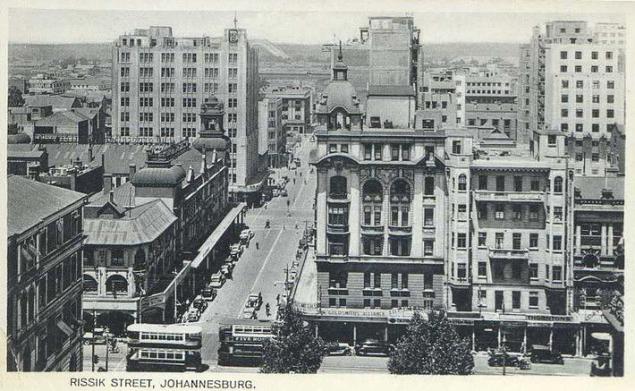
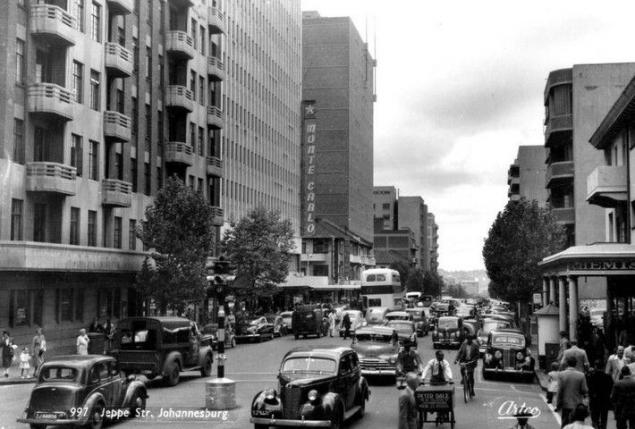
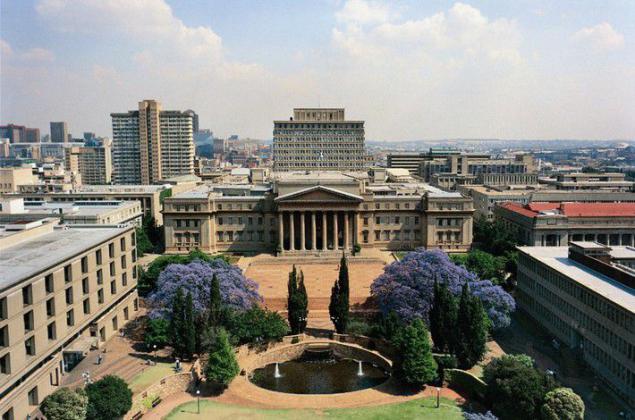
Since the 1930s the city stormy river flowed foreign investments. "Little New York of Africa" quickly turned into a business center of the whole continent, and the source of well-being in addition to the gold mines of other mining and steel industry, particularly mining of diamonds and later uranium. At the end of 1940 to the headquarters of numerous corporations and banks began active construction of many modern office buildings, mostly high-rise. Central Business District («The Central Business District") of Johannesburg was a real African Manhattan, which served as background rock dumps of the most mines that brought prosperity to the city.
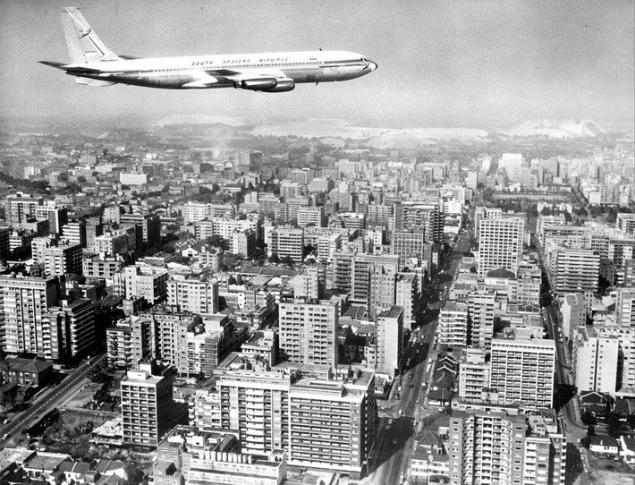
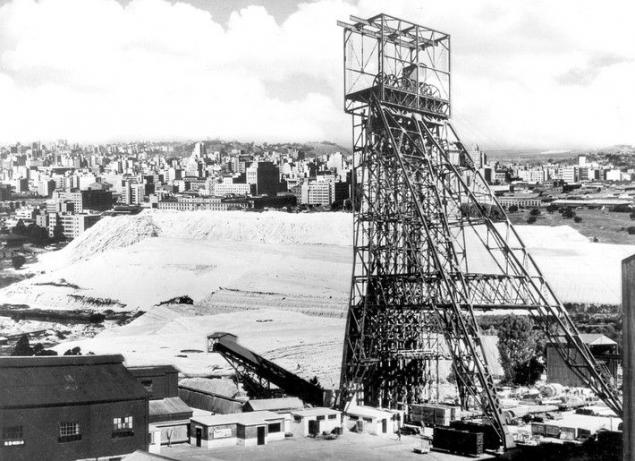
In the 1960s, the industry, and with it the economy of South Africa have been on the rise. In Johannesburg, housed the headquarters of 65 of the 100 largest South African companies, including 6 of 8 mining conglomerates, 13 of the 30 insurers and 11 of the 16 leading banks in the country. "City of Gold" became a cosmopolitan metropolis with 2, 5 million people (by 1985), high-rise buildings of glass and concrete, luxury hotels and restaurants. So Joburg looked in 1959.
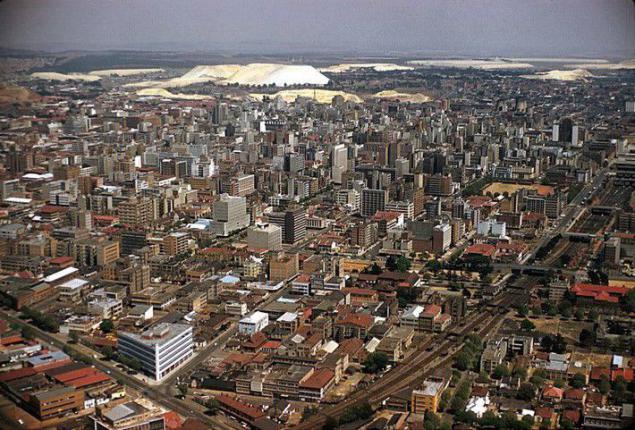
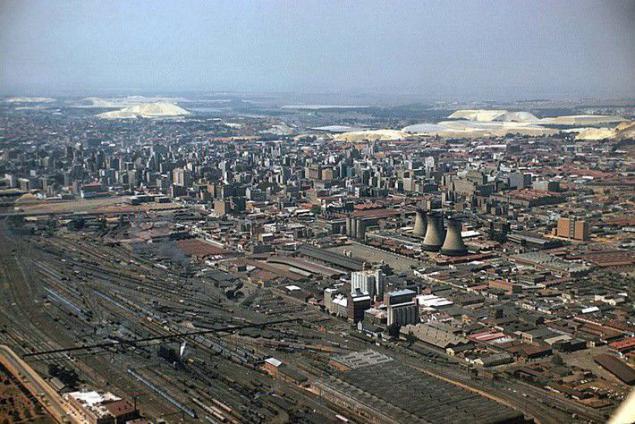
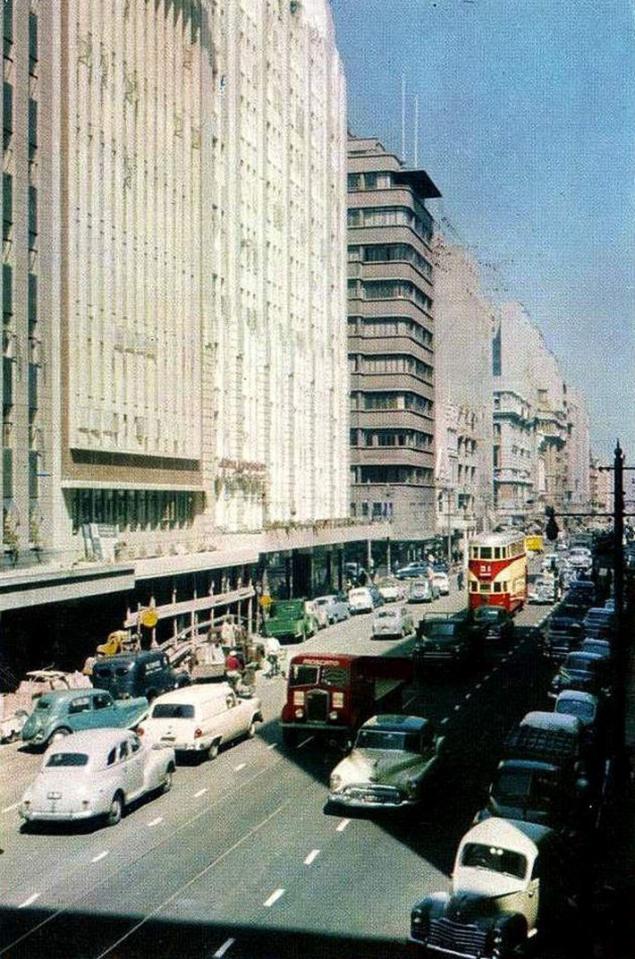
In parallel, in the same 1960 in Johannesburg turned and other processes inherent in many large cities of the Western type. C development of the motorway network and reduce the cost of private cars started eksurbanizatsiya - a massive relocation of the middle class of high-rise center in low-rise suburbs. At the same time, unlike Detroit, Joburg is not emptied. If the welfare of "Motor City" depended only on one industry (automotive) and her decline quickly ended, the "City of Gold" in the economic sense was much more polycentric. His wealthy residents actually moved to their own country houses, but it kept coming back to work in the office of Central Business District.
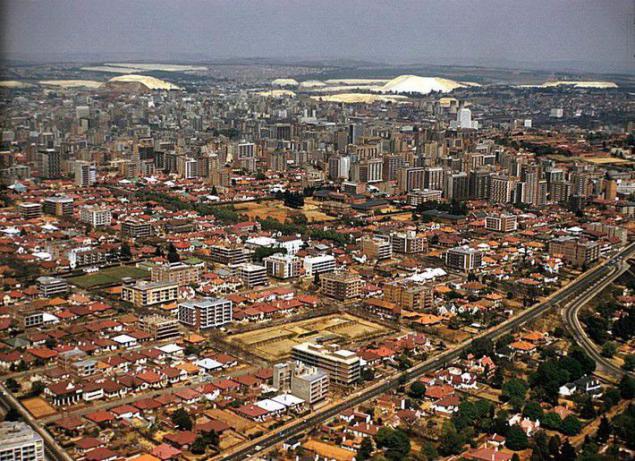
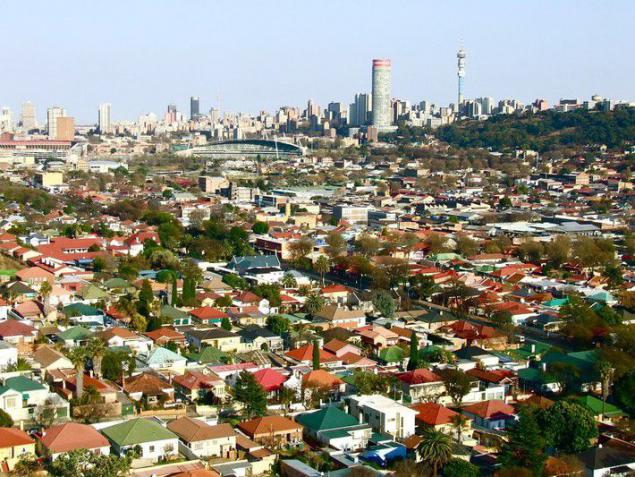
Another important difference from Detroit to Johannesburg was that its prosperity was first obliged not only to objective economic processes, such as high-value natural resources. It plays an important role South Africa's official ideology, dubbed "apartheid" (which means "separateness"), implying the actual separation in the country white and "colored" (primarily black) population.
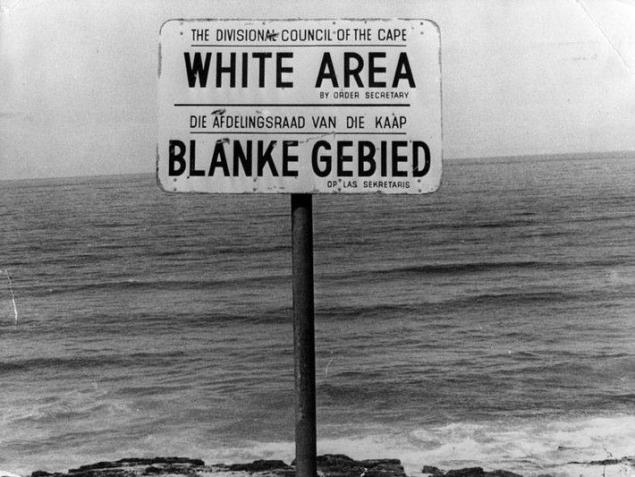
The black population of South Africa was obliged to live in designated areas, ie. N. "Bantustans". Check out these reservations and visit the cities of black South Africans could be carried out only in two cases: either special (of course obtained with great difficulty) resolution, or in the presence of "white" areas of the workplace. This work is in most cases has been associated with severe low-skilled labor for the lowest possible cost. Cheap labor in 1940-80-ies in the background resursoekspluatiruyuschey economy has played a significant role in the transformation of South Africa's most developed countries in Africa
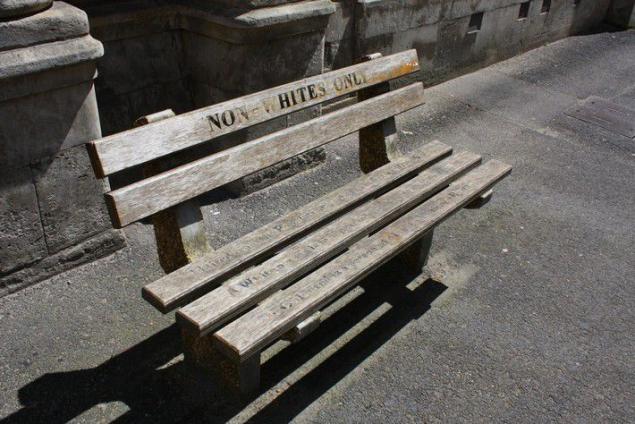
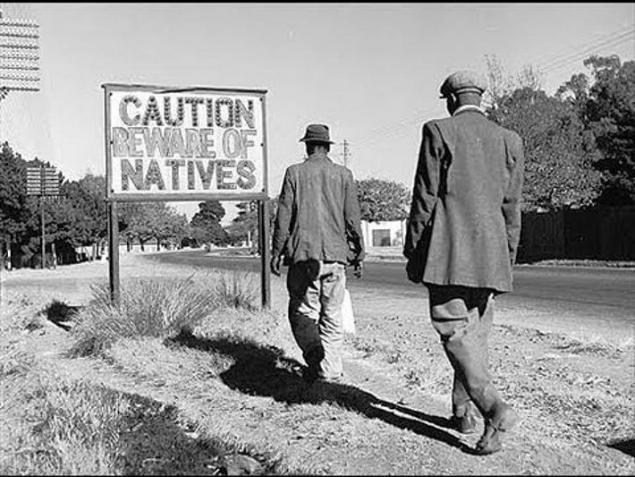
Segregation in South Africa meant not only separation of "white" and "black", different races have had their health, education, transport, entertainment and so on.. In the big cities Negroes allowed only appear to work, or if they We lived there until World War II. Good Luck Johannesburg, a city of skyscrapers of glass and concrete, broad highways, buried in blooming lilac Jacaranda beautiful private houses with tiled roofs, the city was white and white.
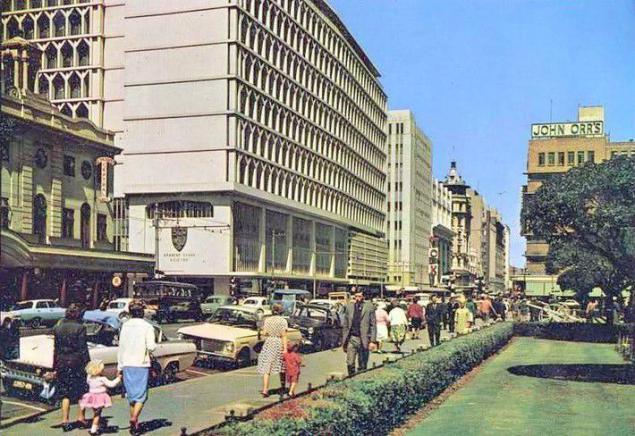
Without the black population in the big cities, of course, it was still not enough. For their stay in 1950-60 outside the city created a system of isolated townships, special settlements for black South Africans. This township, called Soweto (Soweto), and was built near Johannesburg, and forcibly evicted the residents here previously spontaneously evolved around the "golden city" of black communities. In fairness it should be noted that the government initially tried to give Soweto more or less civilized features, albeit with racial discrimination. The settlement money diamond king Ernest Oppenheimer was built up in neat typical four-room houses, called by locals "matchboxes» (matchbox).
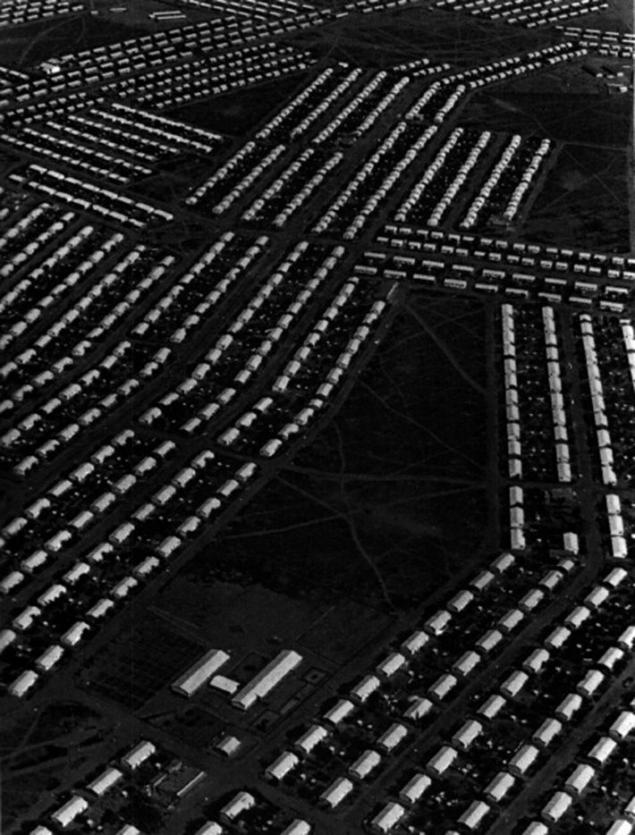
Until now, "matchboxes" form a relatively affluent neighborhoods Soweto.
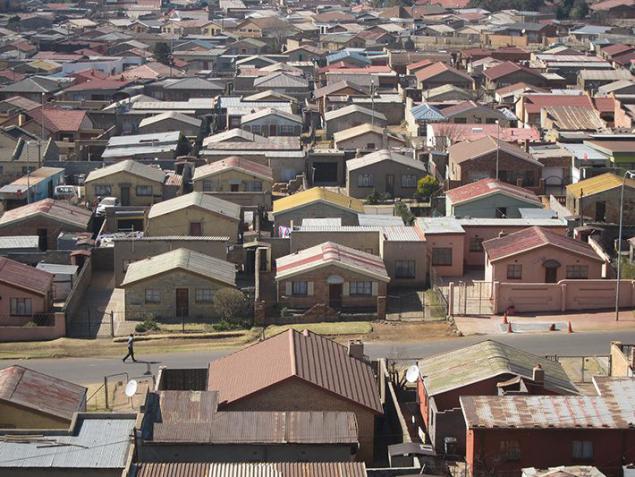
In one of these houses he lived and Nelson Mandela, the main fighter against apartheid in South Africa.
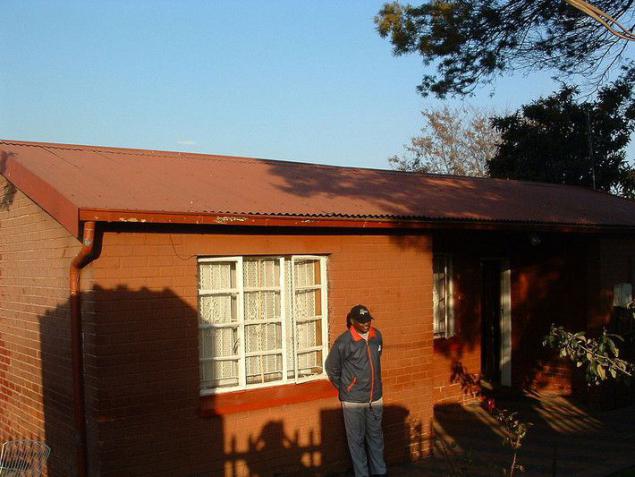
But the rapid growth of the population were led to the fact that these areas have acquired a chaotic kind of slum buildings. By 1983, already lived in Soweto 1, 8 million people.
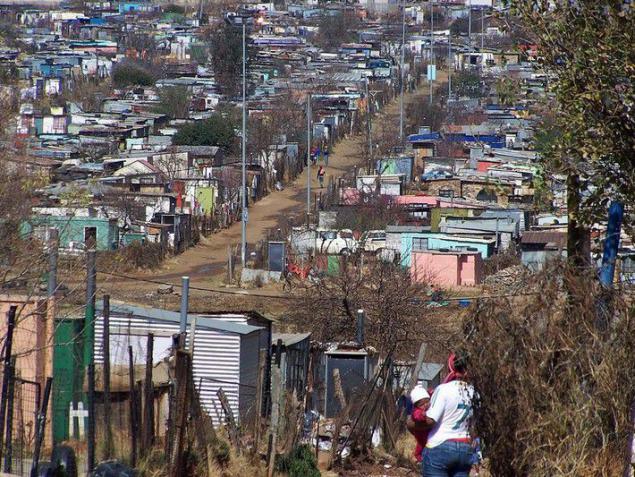
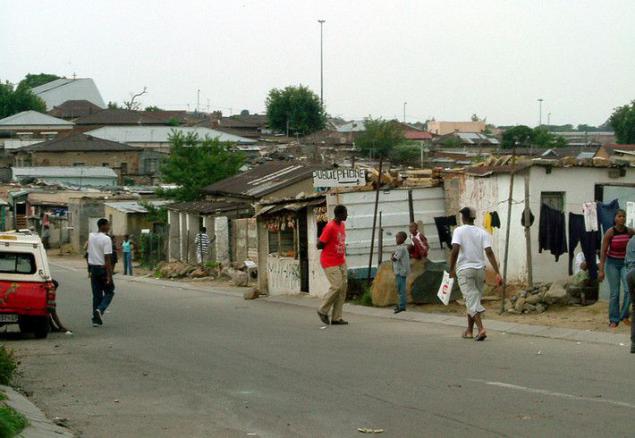
The apartheid system ceased to exist after the first democratic elections in South Africa in 1994. Enfranchised black majority to elect a president Nelson Mandela, and at the same time Johannesburg began rapidly and sometimes changed beyond recognition.
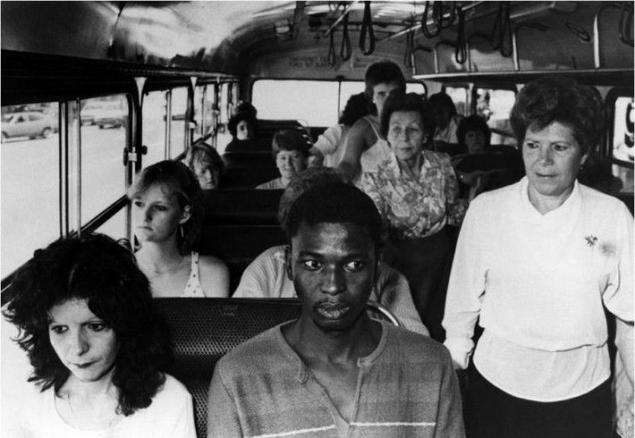
Back in the 1980s in South Africa eksurbanizatsiya intensified. Following the ordinary people "out of town" reached out and shopping and entertainment infrastructure. In the central business part of Joburg and multi-storey apartment blocks have become massively closed shops and restaurants, they are replaced by large multifunctional shopping centers in the suburbs. However, in the early 1990s, the process took an avalanche. Post-apartheid black population of the country had access to previously closed areas for him and, of course, immediately took advantage of this opportunity. White, of course, did not wait for the new masters of the state. Those who have continued to live in the center of Johannesburg, t. N. "Inner city" quickly left the apartment. In their place, immediately moved in new tenants of color.
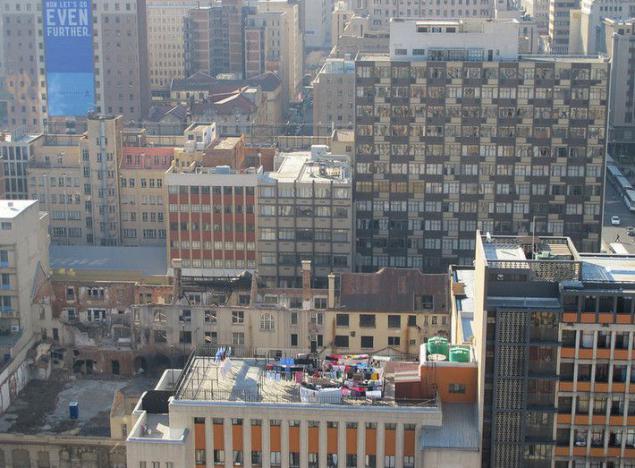
It was a classic example of "white flight", but differs from a similar situation in Detroit. If the "Motor City" has played a leading role depressive main industries of the city economy - automobile, the "city of gold" at the base were primarily political processes. However, regardless of the underlying causes of the result is the same. Both the metropolis of the "white" have become "black».
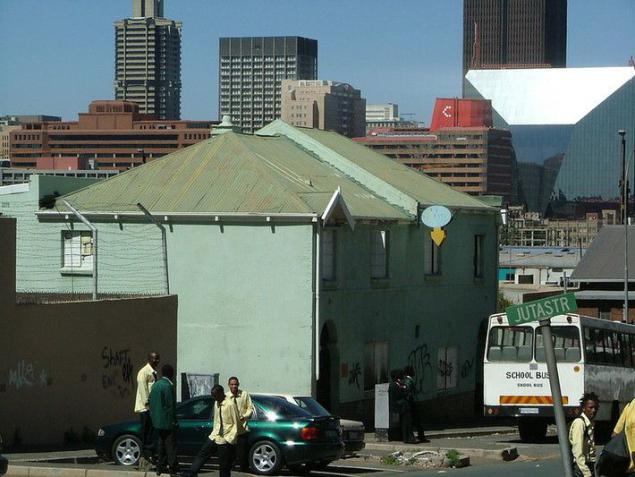
The largest residential areas, such as apartment blocks built up Hillbrow, were virtually captured aliens from Soweto, and captured in the truest sense. The owners of apartment buildings, does not focus on time in the situation, and perhaps not wanting to do it, often refused to reduce the rent for the apartment. Insolvent also came from the Negro slums were not able to pay it. From this stalemate last we found two ways: either to settle in the city in the purse that turned the once luxurious condominiums in the human anthill, or simply engaged in squatting, illegally occupying abandoned white housing altogether refusing to pay for it. The immediate result of this was the rapid degradation of the housing stock of the city. Landlords stopped to maintain the property, there is cut off water, sewer, electricity. "Little New York" becomes "Little Harlem».
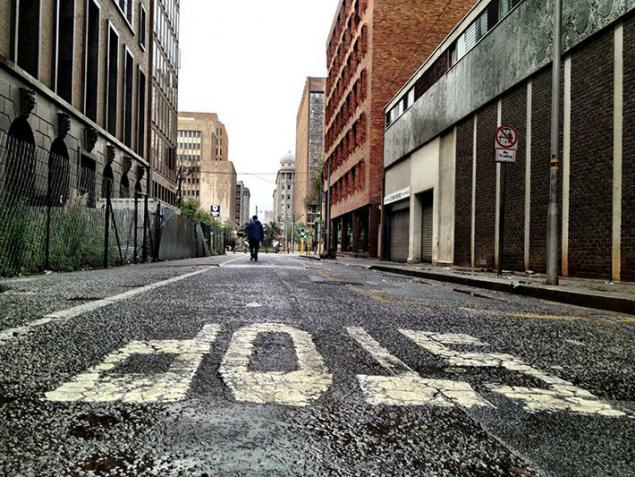
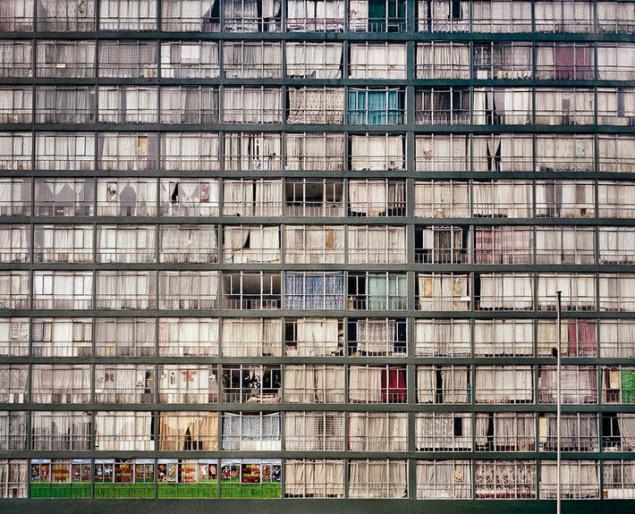
The most striking example of this was the residential complex of Ponte City. Built in 1975, the 54-story tower after commissioning sets new standards prestigious property in Johannesburg.
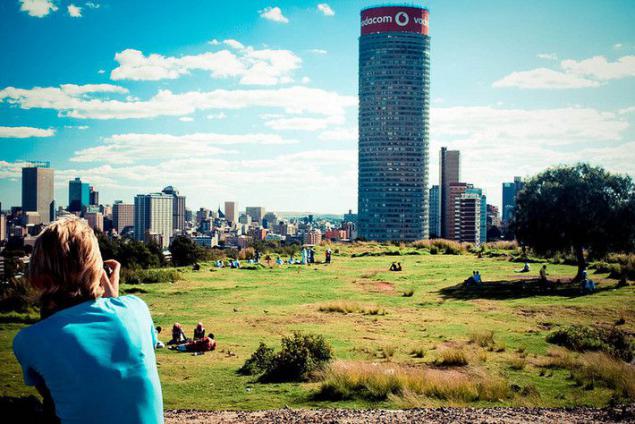
The highest (173 meters) residential building with an inner atrium Africa is famous among residents unprecedented views of the city.
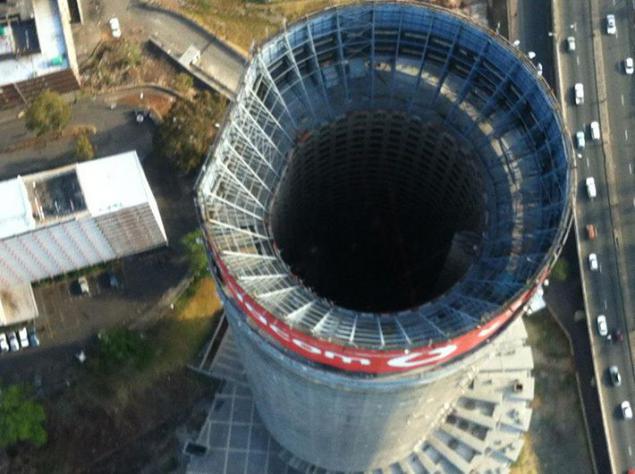
In the 1990s, the post-apartheid deserted high-rise captured Negro gangs, turning a luxury condominium in the hotbed of crime, drug addiction and AIDS. The bottom of the atrium acted as a dump height of five storeys
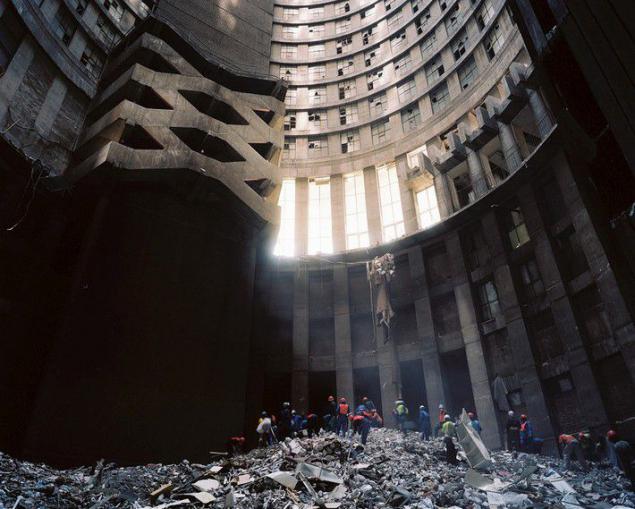
In the end, the authorities in the 2000s, was released from a skyscraper squatters, then even considered the possibility of conversion of Ponte City in high-rise jail.
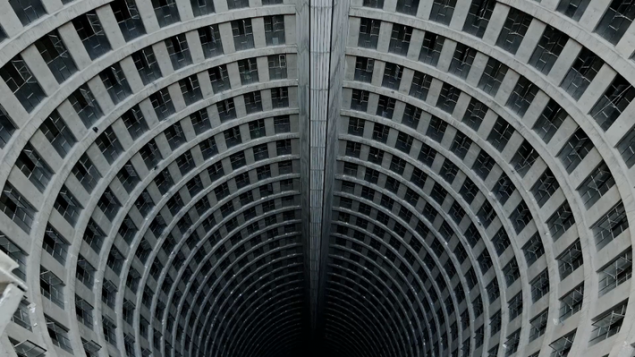

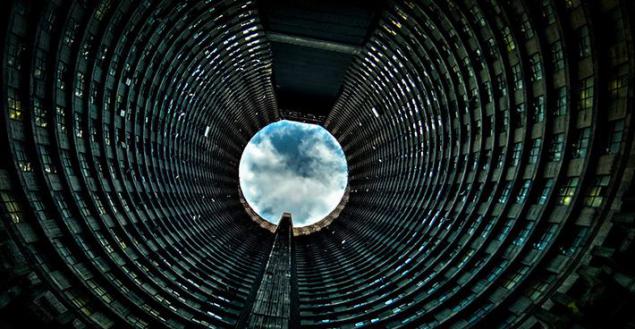
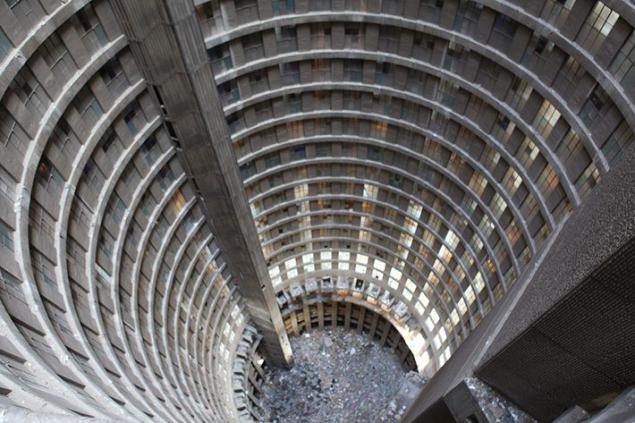
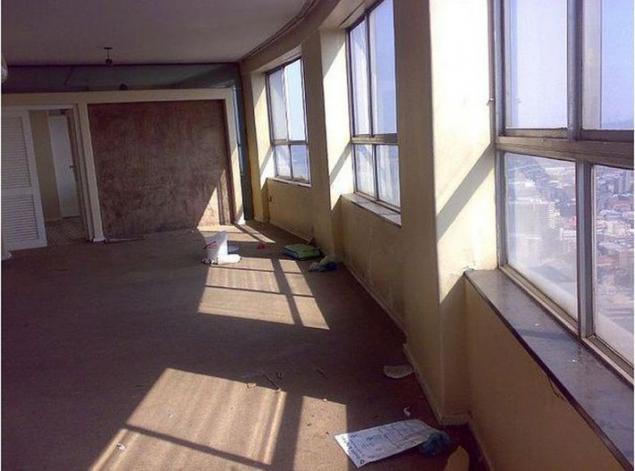
The capture of a building gang, of course, has not done. The crime rate in the once prosperous and safe streets off scale. In 1994, in the province of Gauteng, which was the capital of Johannesburg, there were 83 murders per 100 000 inhabitants. For comparison, in the occupied criminality Detroit that year killed 54 people out of 100 000. The logical result of rampant crime in the country gained its democracy was the outcome not only wealthy people, but also the business of the city. Luxury Hotel Johannesburg Sun Hotel from one-star to five-star turned, found himself in a similar situation Carlton Hotel - a symbol of the prosperity of the 1970s. Finally, in 1990, these hotels have closed altogether.
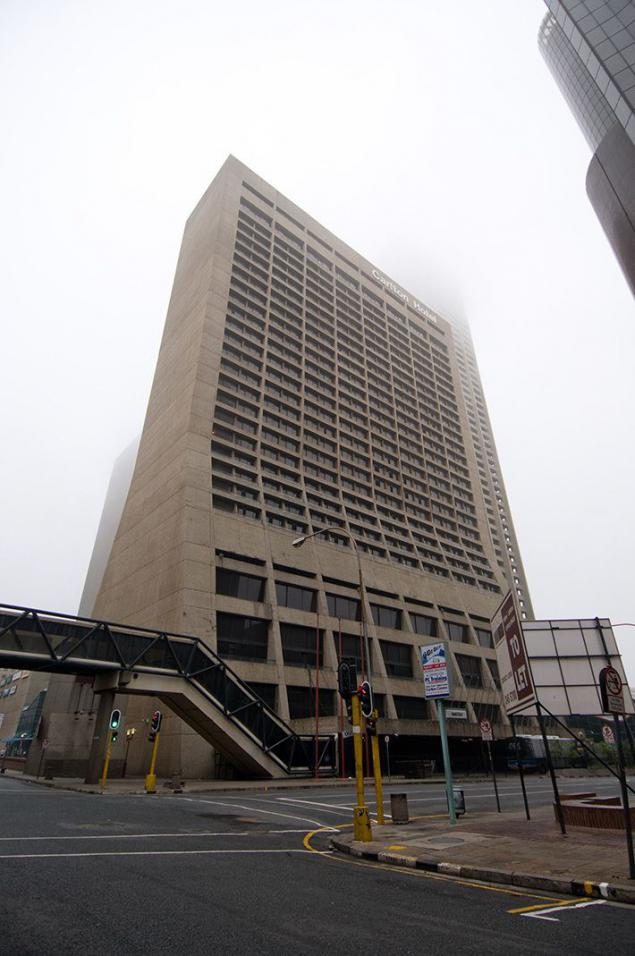
Externally, the building still looks good, the owners do not lose hope of ever re-enter the hotel in operation, but is not yet willing to.
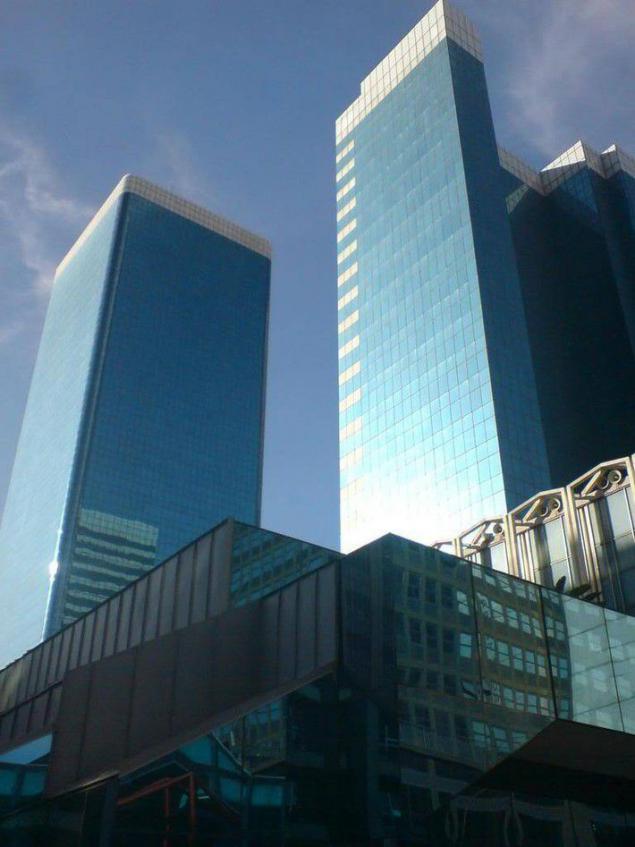
Joburg CBD also empty. Skilled employees in the 1990s, fleeing en masse from the "inner city", refused to go back, even to work. An aerial view of the "little African Manhattan," looks like a good idea.
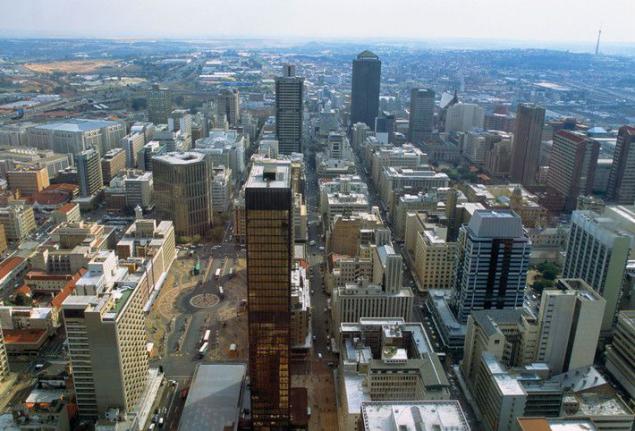
During the descent to the ground ugly reality becomes much more apparent.
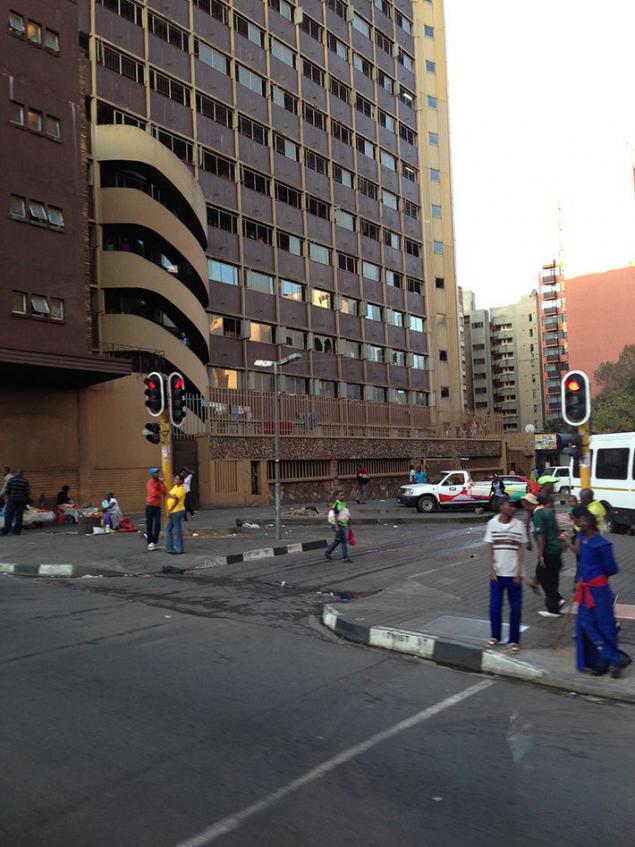
Big business, the headquarters of the largest South African companies, of course, from Johannesburg have not gone away, the city is still the country's business capital. They only moved closer to the staff. In the northern suburbs of Joburg, near Sandton, a new downtown, certainly not as impressive as created in 1950-70-ies "Central Business District", but much more secure.
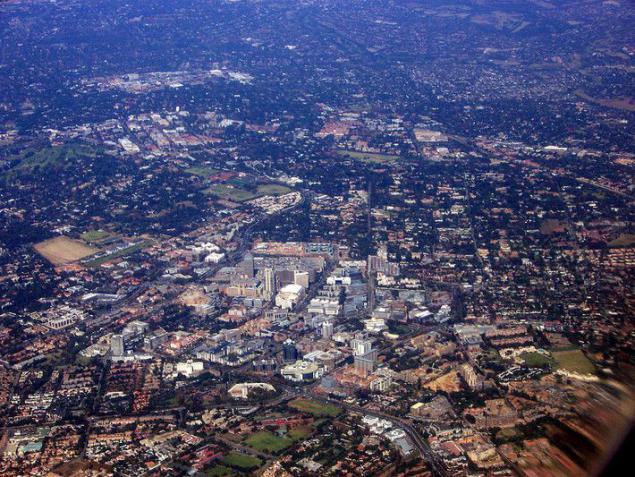
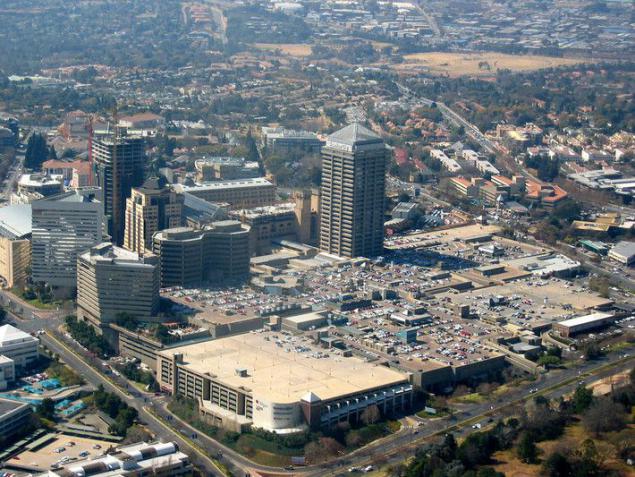
The pictures Sandton Johannesburg again looks modern, even fashionable city of the XXI century, if not African at all.
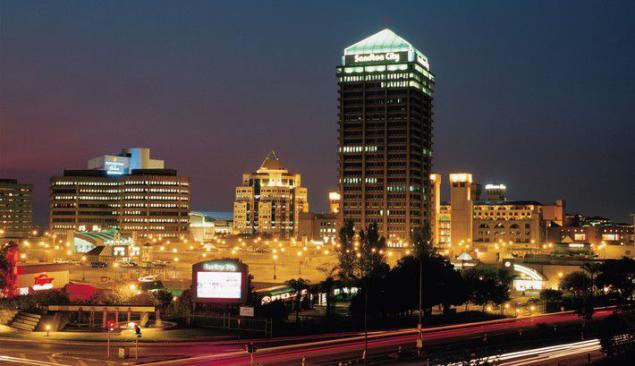
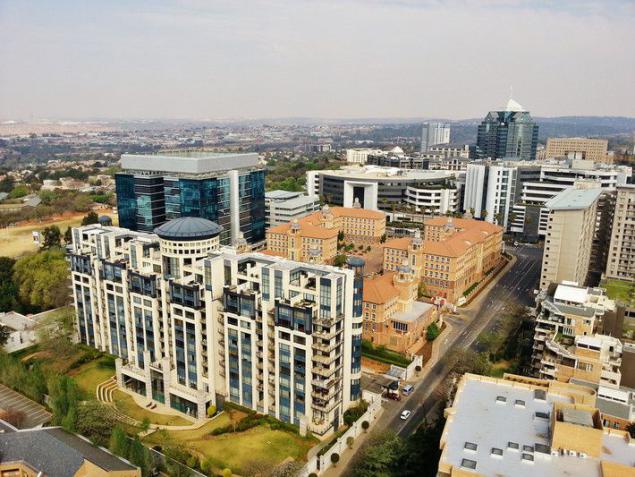
Elimination of apartheid, brought the black population of reservations actually sending them white Afrikaners. Leaving the center of Joburg, they moved to the suburbs of their own fortress. Surrounded by a two-meter fence with barbed wire and round the clock security, these compact settlements near the new administrative center of the city was allowed to remain at home with white South Africans (in Johannesburg, there are about 16%) to maintain a habitual way of life and a relatively comfortable existence. The city is actually still remains divided, only black and white are swapped.
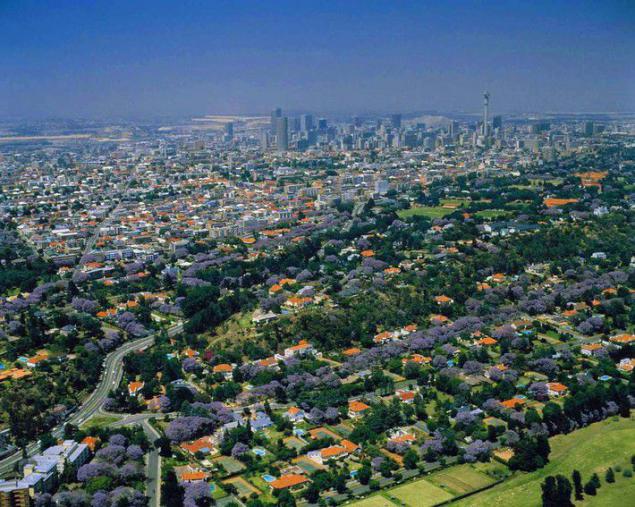
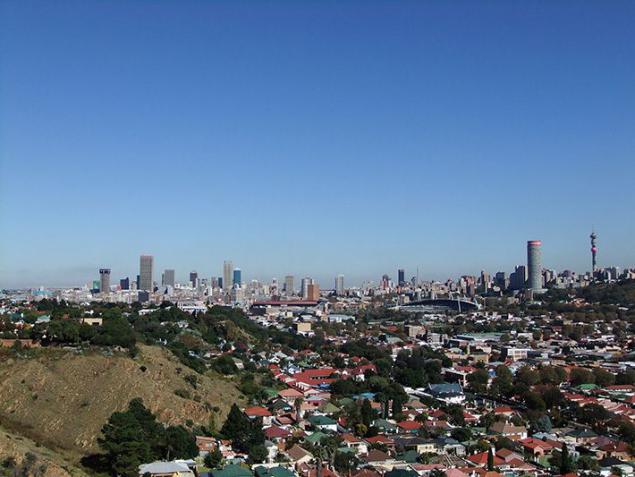
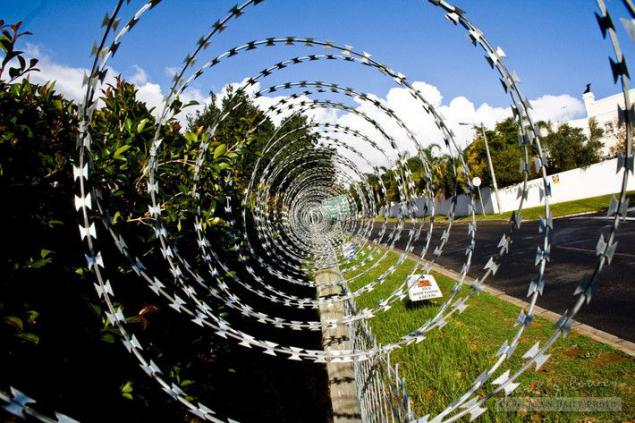
District Hillbrow, where previously lived white employees the largest South African companies.
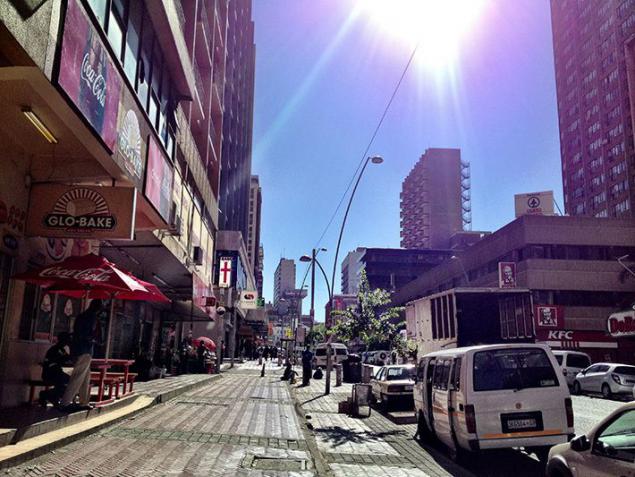
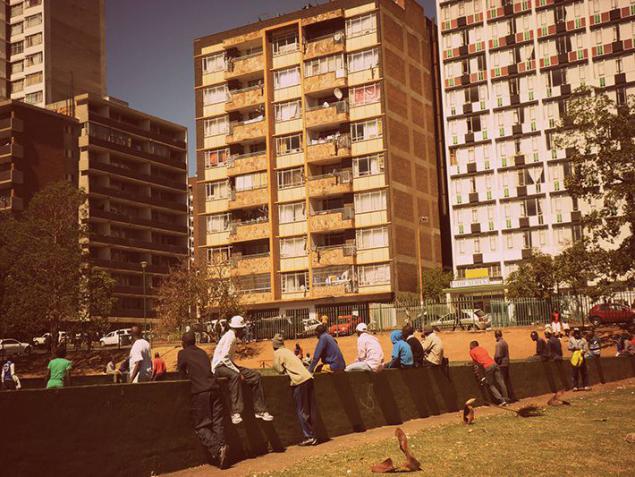
In recent years, the South African government is attempting to reverse the situation. The state allocates enough serious money on the regeneration of the country's largest city and restore its good reputation. Degraded in the last 20 years building reconstructed, populated here yet appeared in these years is still a relatively small black middle class.
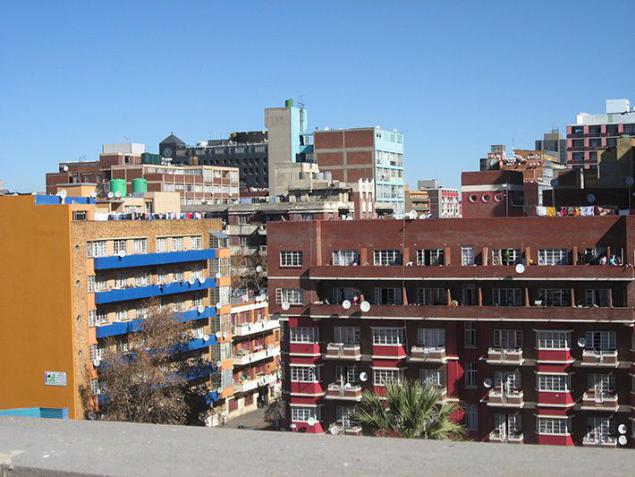
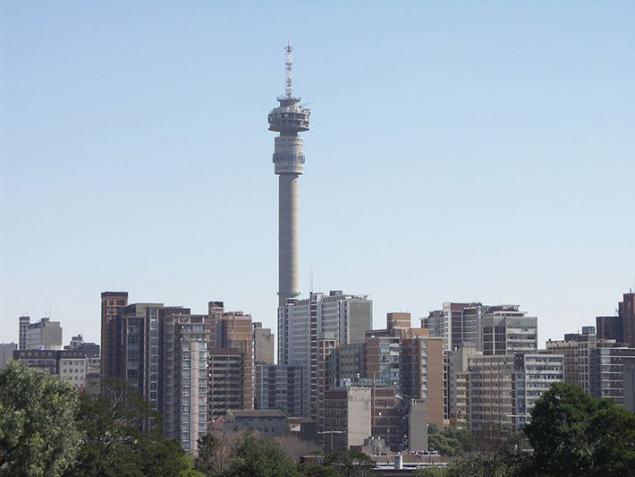
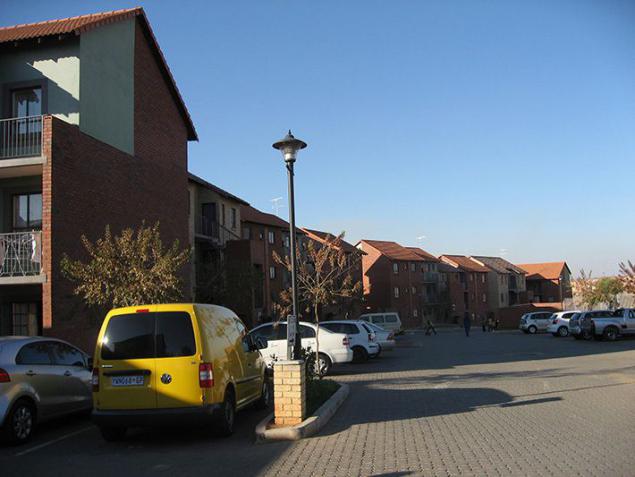
The city built the cultural and sports facilities, even in the slum of Soweto. It turned out to be very helpful, and the World Cup of 2010, one of which became the center of Johannesburg. At least, its transport system has become more or less civilized.
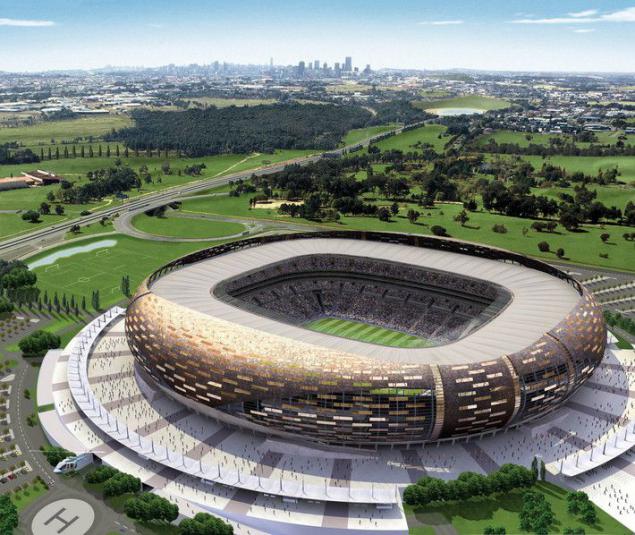
It was possible to reconstruct even frustrated skyscraper-prison Ponte City. Former tenants, of course, there have not returned, but the bandit den tower to be stopped. Now live here more or less well-off black Africans.
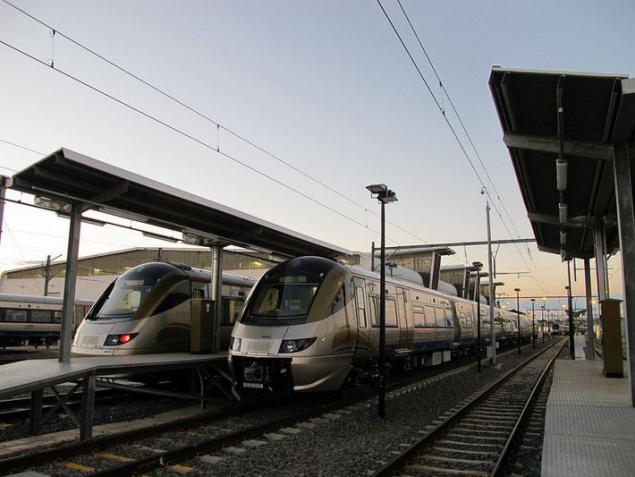
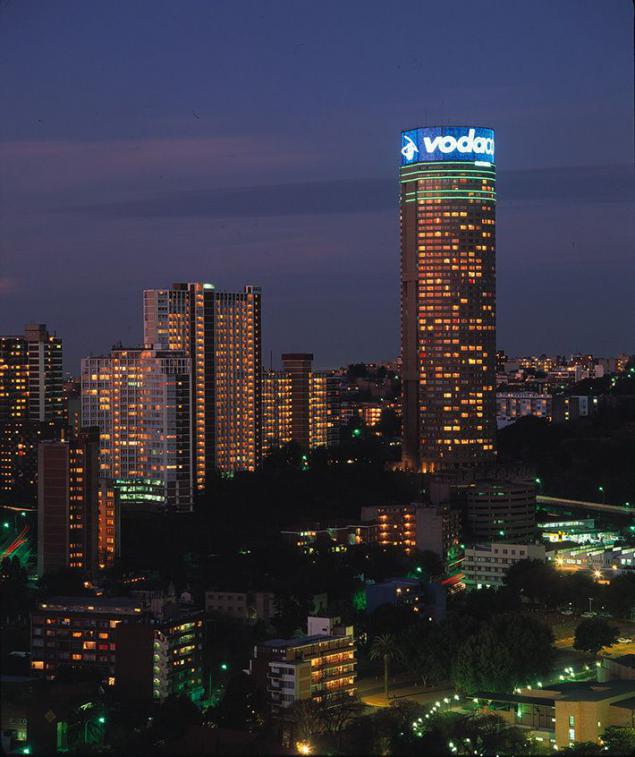
Quickened life in the "Central Business District". Most of its high-rises are still empty, but some companies and banks have returned here, drawn here significantly reduce crime and small rents. In 2001, Johannesburg (no "white" northern suburbs) gave about 2, 5% of GDP, in 2011 - already 16%.
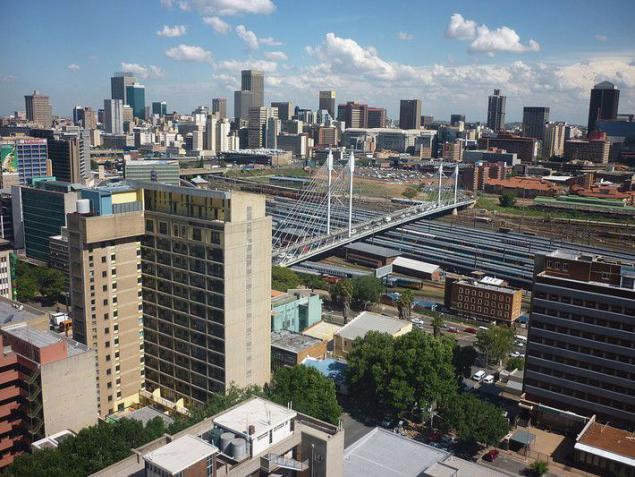
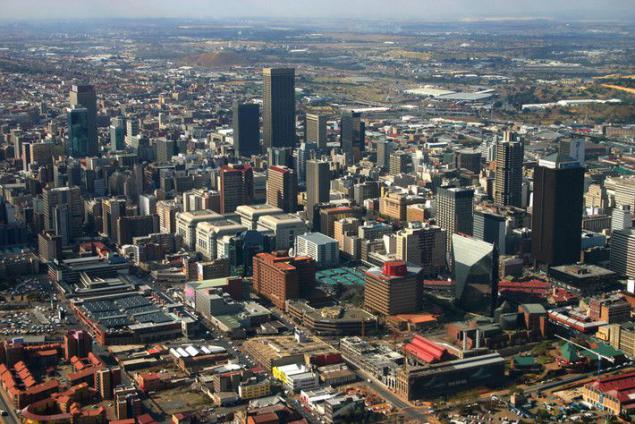
The South African government has spent about hundreds of millions of dollars on rebranding Joburg. The official slogan of the town was a bold statement, "world-class African city". The authorities do not lose hope to return him to the image of a cosmopolitan business capital of the continent, but this time with the multicultural tinge without all discrimination.
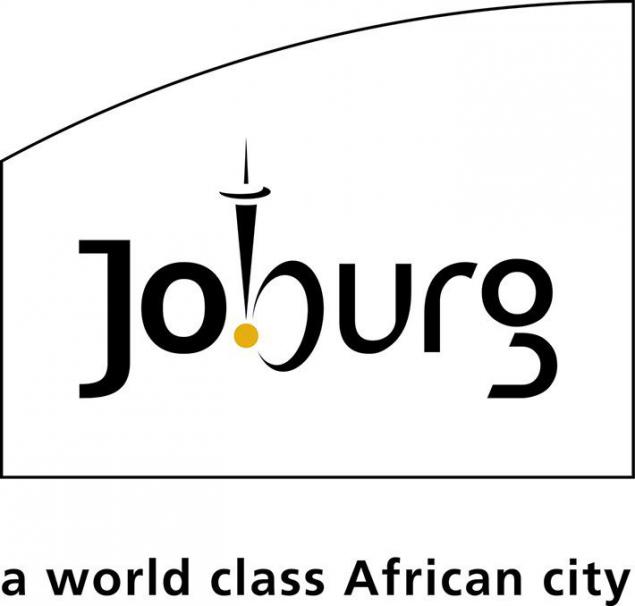
But in the city of "world class" is too much of a typically African problems. It is still surrounded by brutal slums, where often no sewage, no water. Crime, although reduced, is still at a level incomparable with the civilized countries of the "golden billion". In the central part of Johannesburg tourists, especially white, it is still not recommended to leave the car. South Africa, and with it, and its largest city, sweeping AIDS epidemic. But the main thing - racial division seem to be liquidated 20 years ago, the de facto continues to exist.
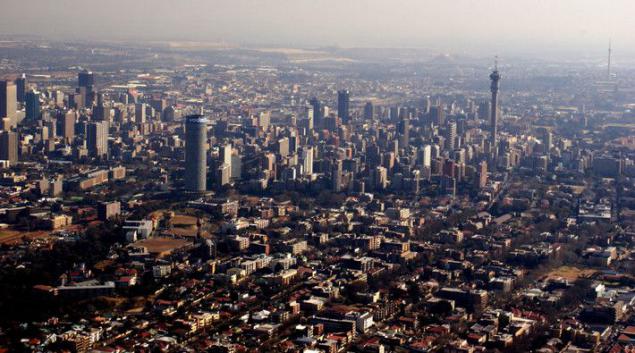
Johannesburg is still a city of opposition, and let the parties thereto are reversed, it is still a confrontation between two ghettos: black, still poor, but happy reflective about the lost in the XX century, the opportunities and accusing the other side of all their troubles, and white , wealthy, but there are now behind barbed wire, taking a great interest in psychology of a besieged fortress.
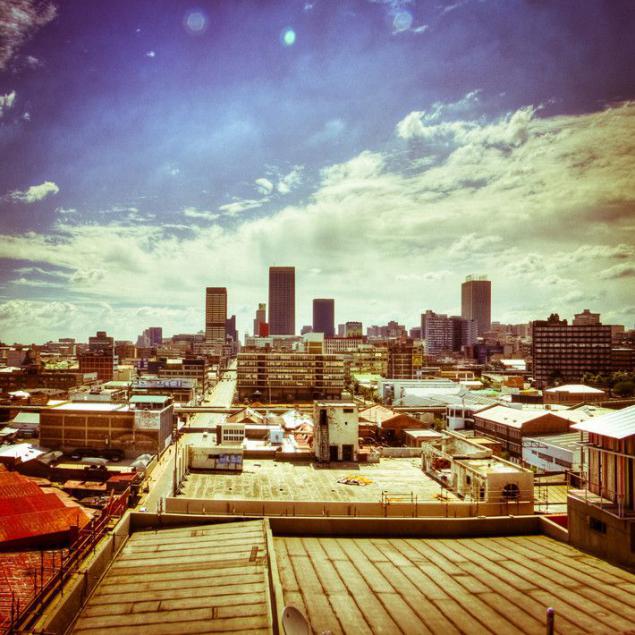
Bright Future "City of Gold" is directly dependent on its ability to eliminate a confrontation.
--img61--
Source: realt.onliner.by

In February 1886 the Australian John Harrison, quarried stone for the construction of a building on t. N. "Farm Langlahte" in South Africa's Witwatersrand mountains, accidentally discovered the breed, which he recognized as the gold-bearing. Thus was formed open about 2, 7 billion years ago, a rich "Golden Arm", a chain of deposits to date has brought to humanity more than 48 000 tons of the precious metal, about 40% of the gold mined in human beings. News of the sensational discovery spread quickly through the neighborhood, and in the next year on the site of the opening of Harrison in hastily-built town of about 3,000 people lived. Future in Johannesburg in the early days of its existence.

Settlement due immediately raging around the "Gold Rush", has experienced explosive growth in the population. By the end of XIX century lived here for more than 100,000 fortune seekers from around the world, Johannesburg quickly built up capital buildings, and has only a quarter of a century after the founding of the tent camp in the desert prospectors little reminiscent.


In 1936, when the "city of gold" (a nickname quickly got Joburg) is 50 years old, he already had 620,000 inhabitants, more than, for example, in Cape Town and Pretoria together. He was called "the largest and most populated city in Europe in Africa" and "the great golden center of the British Empire." Next to the beautiful colonial architecture of the century, Paris resembled his contemporaries, gradually emerging high-rise buildings in the Art Deco style, and there was no longer do without comparisons with New York. Proper town planning with a rectangular grid of streets and neighborhoods This impression is reinforced.



Since the 1930s the city stormy river flowed foreign investments. "Little New York of Africa" quickly turned into a business center of the whole continent, and the source of well-being in addition to the gold mines of other mining and steel industry, particularly mining of diamonds and later uranium. At the end of 1940 to the headquarters of numerous corporations and banks began active construction of many modern office buildings, mostly high-rise. Central Business District («The Central Business District") of Johannesburg was a real African Manhattan, which served as background rock dumps of the most mines that brought prosperity to the city.


In the 1960s, the industry, and with it the economy of South Africa have been on the rise. In Johannesburg, housed the headquarters of 65 of the 100 largest South African companies, including 6 of 8 mining conglomerates, 13 of the 30 insurers and 11 of the 16 leading banks in the country. "City of Gold" became a cosmopolitan metropolis with 2, 5 million people (by 1985), high-rise buildings of glass and concrete, luxury hotels and restaurants. So Joburg looked in 1959.



In parallel, in the same 1960 in Johannesburg turned and other processes inherent in many large cities of the Western type. C development of the motorway network and reduce the cost of private cars started eksurbanizatsiya - a massive relocation of the middle class of high-rise center in low-rise suburbs. At the same time, unlike Detroit, Joburg is not emptied. If the welfare of "Motor City" depended only on one industry (automotive) and her decline quickly ended, the "City of Gold" in the economic sense was much more polycentric. His wealthy residents actually moved to their own country houses, but it kept coming back to work in the office of Central Business District.


Another important difference from Detroit to Johannesburg was that its prosperity was first obliged not only to objective economic processes, such as high-value natural resources. It plays an important role South Africa's official ideology, dubbed "apartheid" (which means "separateness"), implying the actual separation in the country white and "colored" (primarily black) population.

The black population of South Africa was obliged to live in designated areas, ie. N. "Bantustans". Check out these reservations and visit the cities of black South Africans could be carried out only in two cases: either special (of course obtained with great difficulty) resolution, or in the presence of "white" areas of the workplace. This work is in most cases has been associated with severe low-skilled labor for the lowest possible cost. Cheap labor in 1940-80-ies in the background resursoekspluatiruyuschey economy has played a significant role in the transformation of South Africa's most developed countries in Africa


Segregation in South Africa meant not only separation of "white" and "black", different races have had their health, education, transport, entertainment and so on.. In the big cities Negroes allowed only appear to work, or if they We lived there until World War II. Good Luck Johannesburg, a city of skyscrapers of glass and concrete, broad highways, buried in blooming lilac Jacaranda beautiful private houses with tiled roofs, the city was white and white.

Without the black population in the big cities, of course, it was still not enough. For their stay in 1950-60 outside the city created a system of isolated townships, special settlements for black South Africans. This township, called Soweto (Soweto), and was built near Johannesburg, and forcibly evicted the residents here previously spontaneously evolved around the "golden city" of black communities. In fairness it should be noted that the government initially tried to give Soweto more or less civilized features, albeit with racial discrimination. The settlement money diamond king Ernest Oppenheimer was built up in neat typical four-room houses, called by locals "matchboxes» (matchbox).

Until now, "matchboxes" form a relatively affluent neighborhoods Soweto.

In one of these houses he lived and Nelson Mandela, the main fighter against apartheid in South Africa.

But the rapid growth of the population were led to the fact that these areas have acquired a chaotic kind of slum buildings. By 1983, already lived in Soweto 1, 8 million people.


The apartheid system ceased to exist after the first democratic elections in South Africa in 1994. Enfranchised black majority to elect a president Nelson Mandela, and at the same time Johannesburg began rapidly and sometimes changed beyond recognition.

Back in the 1980s in South Africa eksurbanizatsiya intensified. Following the ordinary people "out of town" reached out and shopping and entertainment infrastructure. In the central business part of Joburg and multi-storey apartment blocks have become massively closed shops and restaurants, they are replaced by large multifunctional shopping centers in the suburbs. However, in the early 1990s, the process took an avalanche. Post-apartheid black population of the country had access to previously closed areas for him and, of course, immediately took advantage of this opportunity. White, of course, did not wait for the new masters of the state. Those who have continued to live in the center of Johannesburg, t. N. "Inner city" quickly left the apartment. In their place, immediately moved in new tenants of color.

It was a classic example of "white flight", but differs from a similar situation in Detroit. If the "Motor City" has played a leading role depressive main industries of the city economy - automobile, the "city of gold" at the base were primarily political processes. However, regardless of the underlying causes of the result is the same. Both the metropolis of the "white" have become "black».

The largest residential areas, such as apartment blocks built up Hillbrow, were virtually captured aliens from Soweto, and captured in the truest sense. The owners of apartment buildings, does not focus on time in the situation, and perhaps not wanting to do it, often refused to reduce the rent for the apartment. Insolvent also came from the Negro slums were not able to pay it. From this stalemate last we found two ways: either to settle in the city in the purse that turned the once luxurious condominiums in the human anthill, or simply engaged in squatting, illegally occupying abandoned white housing altogether refusing to pay for it. The immediate result of this was the rapid degradation of the housing stock of the city. Landlords stopped to maintain the property, there is cut off water, sewer, electricity. "Little New York" becomes "Little Harlem».


The most striking example of this was the residential complex of Ponte City. Built in 1975, the 54-story tower after commissioning sets new standards prestigious property in Johannesburg.

The highest (173 meters) residential building with an inner atrium Africa is famous among residents unprecedented views of the city.

In the 1990s, the post-apartheid deserted high-rise captured Negro gangs, turning a luxury condominium in the hotbed of crime, drug addiction and AIDS. The bottom of the atrium acted as a dump height of five storeys

In the end, the authorities in the 2000s, was released from a skyscraper squatters, then even considered the possibility of conversion of Ponte City in high-rise jail.





The capture of a building gang, of course, has not done. The crime rate in the once prosperous and safe streets off scale. In 1994, in the province of Gauteng, which was the capital of Johannesburg, there were 83 murders per 100 000 inhabitants. For comparison, in the occupied criminality Detroit that year killed 54 people out of 100 000. The logical result of rampant crime in the country gained its democracy was the outcome not only wealthy people, but also the business of the city. Luxury Hotel Johannesburg Sun Hotel from one-star to five-star turned, found himself in a similar situation Carlton Hotel - a symbol of the prosperity of the 1970s. Finally, in 1990, these hotels have closed altogether.

Externally, the building still looks good, the owners do not lose hope of ever re-enter the hotel in operation, but is not yet willing to.

Joburg CBD also empty. Skilled employees in the 1990s, fleeing en masse from the "inner city", refused to go back, even to work. An aerial view of the "little African Manhattan," looks like a good idea.

During the descent to the ground ugly reality becomes much more apparent.

Big business, the headquarters of the largest South African companies, of course, from Johannesburg have not gone away, the city is still the country's business capital. They only moved closer to the staff. In the northern suburbs of Joburg, near Sandton, a new downtown, certainly not as impressive as created in 1950-70-ies "Central Business District", but much more secure.


The pictures Sandton Johannesburg again looks modern, even fashionable city of the XXI century, if not African at all.


Elimination of apartheid, brought the black population of reservations actually sending them white Afrikaners. Leaving the center of Joburg, they moved to the suburbs of their own fortress. Surrounded by a two-meter fence with barbed wire and round the clock security, these compact settlements near the new administrative center of the city was allowed to remain at home with white South Africans (in Johannesburg, there are about 16%) to maintain a habitual way of life and a relatively comfortable existence. The city is actually still remains divided, only black and white are swapped.



District Hillbrow, where previously lived white employees the largest South African companies.


In recent years, the South African government is attempting to reverse the situation. The state allocates enough serious money on the regeneration of the country's largest city and restore its good reputation. Degraded in the last 20 years building reconstructed, populated here yet appeared in these years is still a relatively small black middle class.



The city built the cultural and sports facilities, even in the slum of Soweto. It turned out to be very helpful, and the World Cup of 2010, one of which became the center of Johannesburg. At least, its transport system has become more or less civilized.

It was possible to reconstruct even frustrated skyscraper-prison Ponte City. Former tenants, of course, there have not returned, but the bandit den tower to be stopped. Now live here more or less well-off black Africans.


Quickened life in the "Central Business District". Most of its high-rises are still empty, but some companies and banks have returned here, drawn here significantly reduce crime and small rents. In 2001, Johannesburg (no "white" northern suburbs) gave about 2, 5% of GDP, in 2011 - already 16%.


The South African government has spent about hundreds of millions of dollars on rebranding Joburg. The official slogan of the town was a bold statement, "world-class African city". The authorities do not lose hope to return him to the image of a cosmopolitan business capital of the continent, but this time with the multicultural tinge without all discrimination.

But in the city of "world class" is too much of a typically African problems. It is still surrounded by brutal slums, where often no sewage, no water. Crime, although reduced, is still at a level incomparable with the civilized countries of the "golden billion". In the central part of Johannesburg tourists, especially white, it is still not recommended to leave the car. South Africa, and with it, and its largest city, sweeping AIDS epidemic. But the main thing - racial division seem to be liquidated 20 years ago, the de facto continues to exist.

Johannesburg is still a city of opposition, and let the parties thereto are reversed, it is still a confrontation between two ghettos: black, still poor, but happy reflective about the lost in the XX century, the opportunities and accusing the other side of all their troubles, and white , wealthy, but there are now behind barbed wire, taking a great interest in psychology of a besieged fortress.

Bright Future "City of Gold" is directly dependent on its ability to eliminate a confrontation.
--img61--
Source: realt.onliner.by
